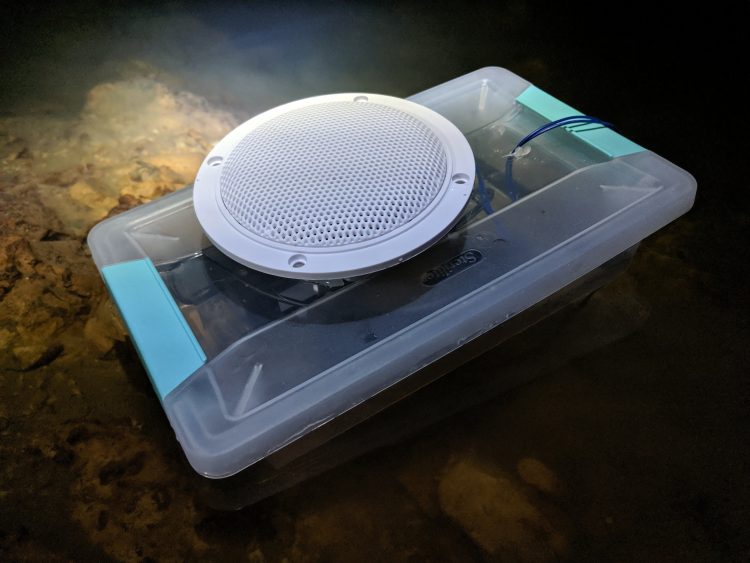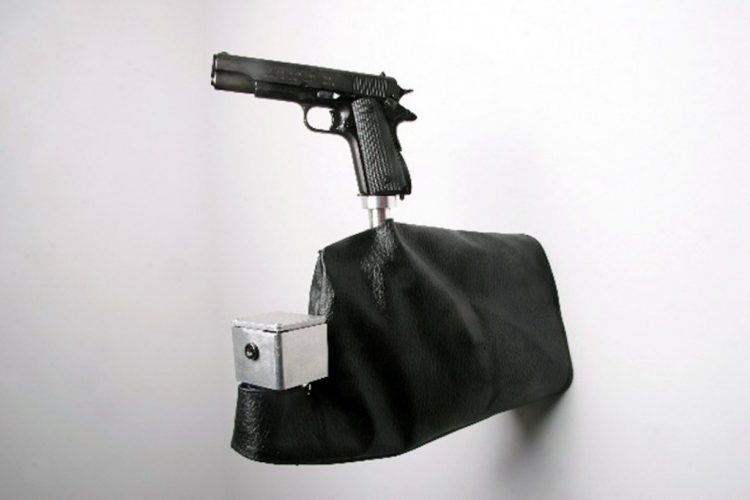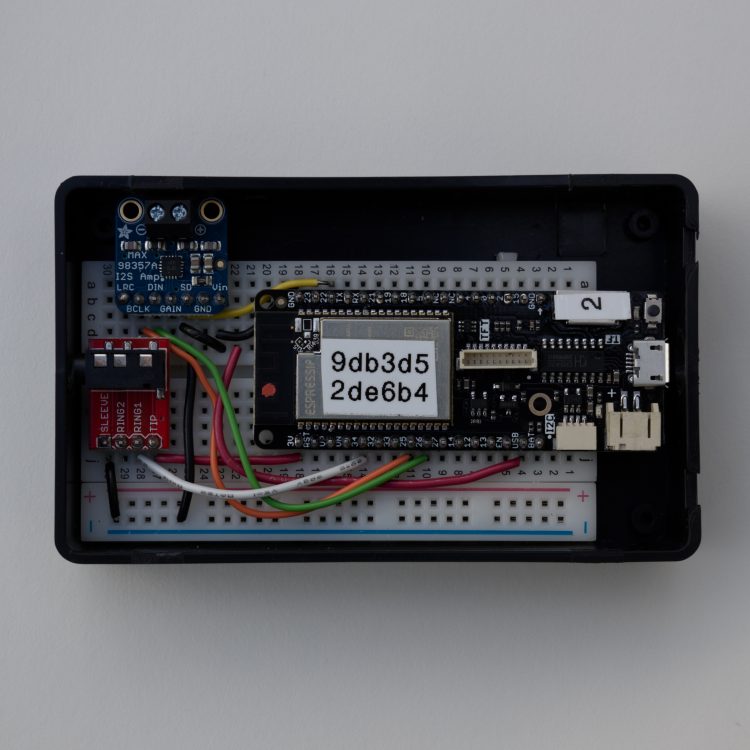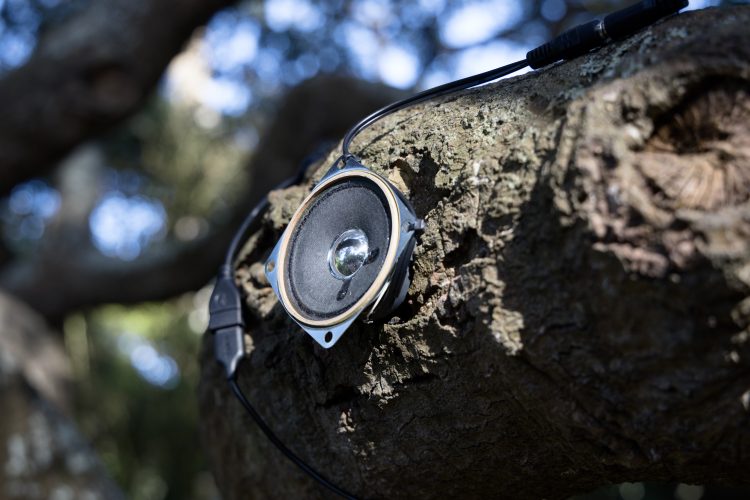Scott Kildall: “Summer schools are hothouses for ideas and for connections”
Published 2 August 2019 by Dare Pejić
Scott Kildall, new media artist based in San Francisco, has been exploring intersections between art and technology for more than 15 years. Makery caught up with him during the first part of his PIFresidency in Ljubljana, before he joins PIFcamp, a Feral Labs Network summer camp in Soča Valley, Slovenia, August 4-10, 2019.
How would you present yourself and your work?
I am a new media artist — someone who works with art + technology + criticality — who looks at the interplay between territory and technology. I quickly learn, master and deploy various technologies such as electronics, virtual reality and digital fabrication to insert strategies of subversion and modes of mapping into my artworks.
Recent artworks range from stone tablets etched with meteorite impact data to interactive sound installations based on water quality to virtual reality installations where viewers can fly around data involving the artificial construct of the nation-state. My latest inquiries are around the tension between human impact on this planet and its potential technical solutions.
I live in San Francisco and also run an artist residency program there called Xenoform Labs.

I recently stumbled upon an old article about your project “Gun Control” from 2004. What was your motivation for this project and how do you see it from today’s perspective?
I created Gun Control while I was in graduate school. It’s a set of four electromechanical sculptures, which used stepper motors, servos and cheap cameras to track viewers, making replica handguns follow them in the gallery. I hid unsightly electronics in a custom-sewn leather pouch, resembling some sort of body bag.
Gun Control was my heavy-handed response to the post-911 landscape and the onset of the Iraq War. I exhibited it twice, then packed it up. It lacked subtlety and tension. At the time, there was not enough room for the viewer to have their own experience.
Last year, I pulled the artwork out of deep storage. I brought the pieces to my studio and plugged in one of the units. It functioned perfectly. Upon revisiting this piece after 12 years, my combination of guns and surveillance seems eerily prescient.
Mass shootings in the United States have skyrocketed in the last several years. Surveillance is everywhere, both with physical cameras and the invisible data-tracking from Internet servers. Documentation of police shootings of unarmed African-Americans is sadly, commonplace. I no longer recoil from the explicit violence of this old artwork.

You are currently in Ljubljana for a Feral Labs PIFresidency at Projekt Atol. What is the focus of your residency and what are your expectations?
I’m working on a project called Unnatural Language, which is a collaboration with Michael Ang. This is a network of electronic organisms (“Datapods”) that create sonic improvisations from physical sensors in the natural environment. Each Datapod has custom electronics connected to sensors, a speaker and a wireless network. The sensed data, for example from electrodes that measure the subtle electrical variations in the leaves of plants, is transformed into a unique synthesized sound. Encased in sculptural materials (natural fiber, leather, leaves, etc.) and dispersed into a natural environment, the Datapods enter into a sonic dialogue with the existing ecosystem of plants and animals.
This work derives from some of my explorations into crude audio synthesis in nature, as well as nature at Dinacon [the Digital Naturalism Conference, read our interview with Andy Quitmeyer] in Thailand last year, combined with Mang’s interest in networked ambient light sculptures.
This April, the two of us began collaborating and built the platform (what we called the Datapods), which includes wireless communication, porting the Mozzi synthesis libraries to the ESP32 platform, iPad monitoring, a sophisticated set of code for managing multiple modules, and a simple 2-channel interchangeable sensor design package.
At the Feral Labs PIFresidency, I’m constructing sensors and synthesizers for testing in nature at PIFCamp as well as prototyping the project in the physical environment, such as a daylong tour in a local cave.
It’s been exciting and wonderful to start to move this project from a platform into an actual artwork. I’m focusing a lot of my time on sound design and making simple water-quality sensors and plant-data sensors to create a series of different moving orchestras on rivers.
My expectations were simply time and making some local connections here, and then support at PIFCamp, where I’ll be testing the projects and leading some workshops on some of my water sensors. It’s been great.

Your work also touches on deriving data from other organisms. Can you explain a bit more?
I believe that technology and nature are forming a new hybrid ecology, where innovations such as intelligent devices that occupy the natural landscape are dissolving the traditional nature-culture divide.
Right now, I’m specifically interested in putting sensors on plants and detecting their electrical activity. Each plant has its own internal electro-chemical pathways that react to the environment. When predators such as aphids attack a plant, many plants will emit chemicals to try to deter them, and with certain sensors, you can detect the changes in their electrical activity.
From this data, I can make sounds from different plants, creating a soundscape from what we normally would consider a less “interesting” organism because it appears to just respond slowly to sunlight and water, but is in reality much more complex.

DITOxication is this year’s buzzword at PIFcamp. What are your experiences with summer camps? What can we do at camp that we can’t do the rest of the year?
These short experiences are a hothouse for ideas and for connections. It’s intense, and trying to get production work done is difficult, so instead, the way I approach it is to make prototypes that later might turn into something. There are a lot of conversations with many amazing people. You never know what will happen.
One key is to provide a space for chance encounters. Since we are all staying in a single location, we share meals, we don’t get distracted by other things in life and don’t go home at the end of the night to break from our experience. It’s like making a soup and mixing in a lot of ingredients at the same time and seeing what emerges.
For example, when I was at Dinacon last year, I made crude audio synthesizers, stemming from a previous work I did the previous years. There was something interesting about it, but I needed to bring in a collaborator to make it technically and conceptually happen. I sat on the ideas for about six months and then Mang, an old friend and colleague, and I began talking about collaborating.
At the same time, I was approached to do this residency to develop the ideas at Dinacon that I had been prototyping. So by the time I came to Ljubljana, I had a working platform and have a much stronger project as a result.
Meet Scott Kildall at PIFcamp on open day August 10th in Soča Valley, Slovenia.
The Feral Labs Network is cofinanced by the Creative Europe programme of the European Union. The cooperation is led by Projekt Atol in Ljubljana (Slovenia). Other #ferallabs partners include Bioart Society (Helsinki, Finland), Catch (Helsingor, Denmark), Radiona (Zagreb, Croatia), Schmiede (Hallein, Austria) and Art2M/Makery (France).
